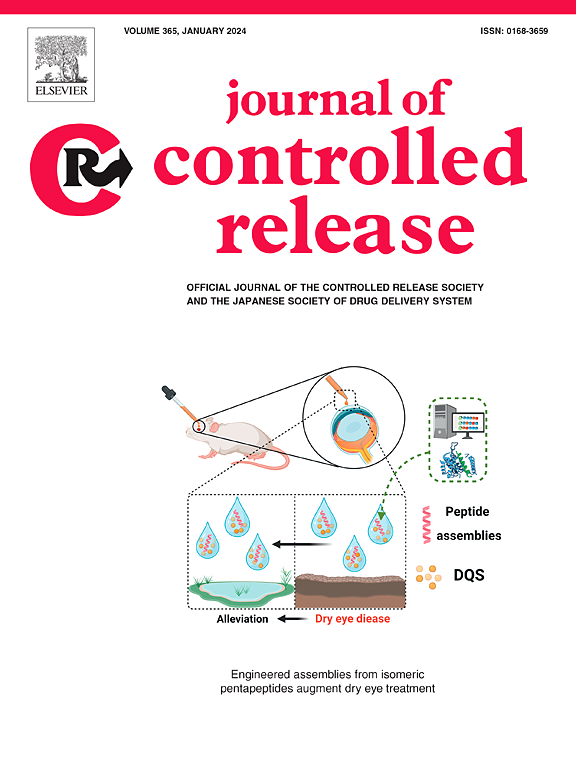Soluble-microneedle enhance three T-cell activation signals as efficient tumor vaccines for melanoma prevention and treatment
IF 10.5
1区 医学
Q1 CHEMISTRY, MULTIDISCIPLINARY
引用次数: 0
Abstract
Therapeutic tumor vaccines, which activate self-T cells to eliminate tumors, hold tremendous promise in future cancer immunotherapy with high specificity and low side effects. To effectively activate T cell, dendritic cells (DCs) need simultaneously provide three indispensable signals to naive T cells, including MHC-antigen signal, costimulation signal and cytokine stimulation. However, current marketed therapeutic tumor vaccines still suffer from lacking the ability to activate three stimulation signals at the same time, which resulted to the low response rate and unsatisfied therapeutic efficiency. Here, we proposed a soluble microneedle-based tumor vaccines (TR-12@LGMN) which facilitate triple activation of antigen presentation and induce high immune response rate. First, the melanoma-specific antigen tyrosinaserelated protein-2 (Trp2), Resiquimod (R848), and IL-12 mRNA co-loaded liposomes (TR-12@LIPO) was prepared. The TR-12@LIPO ensured triple-activating three essential signals of antigen presentation through enhancing the binding of MHC I-antigen peptides to T cell receptor (TCR), the binding of CD80/86 on DCs to CD28 on T cells, and the release of cytokines for T cells activation. Second, TR-12@LIPO was co-dispersed in polyvinylpyrrolidone-polyvinyl alcohol (PVP-PVA) matrix with granulocyte-macrophage colony stimulating factor (GM-CSF) to prepare TR-12@LGMN by mold method. The TR-12@LGMN was quadrilateral shape with sufficient mechanical strength for skin piercing. After skin insertion, TR-12@LGMN dissolved in the skin interstitial fluid to release GM-CSF and TR-12@LIPO. DCs were recruited by GM-CSF and uptaked TR-12@LIPO. TR-12@LIPO showed enhancement of cross-presentation by antigen cytoplasmic delivery, DCs maturation and IL-12 secretion. In vivo results showed that TR-12@LGMN could efficiently activate CD8+ T cells, induce antigen-specific cytotoxic T cells (CTLs) and memory T cell (Tm). Ultimately, strong anti-tumor immunity and long-term durable tumor control were achieved in the B16F10 tumor prevention and treatment model. Overall, our work proposes a triple-activated antigen presentation strategy and designs a microneedle-based tumor vaccine for skin delivery, revealing a potential promising direction for the development of new therapeutic tumor vaccines methods.

求助全文
约1分钟内获得全文
求助全文
来源期刊

Journal of Controlled Release
医学-化学综合
CiteScore
18.50
自引率
5.60%
发文量
700
审稿时长
39 days
期刊介绍:
The Journal of Controlled Release (JCR) proudly serves as the Official Journal of the Controlled Release Society and the Japan Society of Drug Delivery System.
Dedicated to the broad field of delivery science and technology, JCR publishes high-quality research articles covering drug delivery systems and all facets of formulations. This includes the physicochemical and biological properties of drugs, design and characterization of dosage forms, release mechanisms, in vivo testing, and formulation research and development across pharmaceutical, diagnostic, agricultural, environmental, cosmetic, and food industries.
Priority is given to manuscripts that contribute to the fundamental understanding of principles or demonstrate the advantages of novel technologies in terms of safety and efficacy over current clinical standards. JCR strives to be a leading platform for advancements in delivery science and technology.
 求助内容:
求助内容: 应助结果提醒方式:
应助结果提醒方式:


